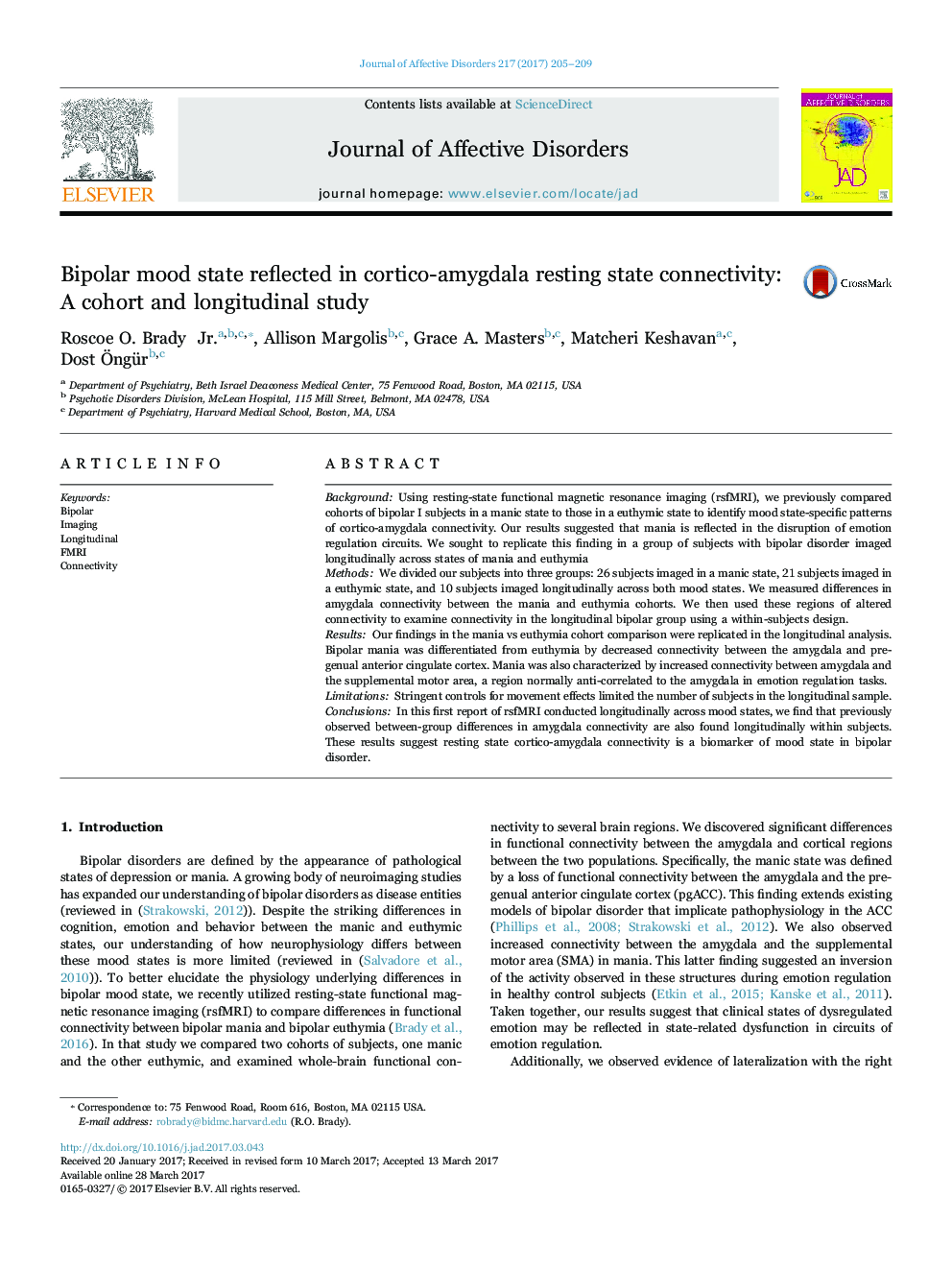| کد مقاله | کد نشریه | سال انتشار | مقاله انگلیسی | نسخه تمام متن |
|---|---|---|---|---|
| 5722202 | 1608108 | 2017 | 5 صفحه PDF | دانلود رایگان |
- Resting state fMRI reveals bipolar mood specific patterns of functional connectivity.
- Mania and euthymia showed distinct patterns of cortico-amygdala connectivity.
- We examined amygdala connectivity in manic and euthymic bipolar cohorts.
- We replicated these results in subjects imaged longitudinally in mania and euthymia.
- Mania is reflected in circuit level dysfunction in regions of emotion regulation.
BackgroundUsing resting-state functional magnetic resonance imaging (rsfMRI), we previously compared cohorts of bipolar I subjects in a manic state to those in a euthymic state to identify mood state-specific patterns of cortico-amygdala connectivity. Our results suggested that mania is reflected in the disruption of emotion regulation circuits. We sought to replicate this finding in a group of subjects with bipolar disorder imaged longitudinally across states of mania and euthymiaMethodsWe divided our subjects into three groups: 26 subjects imaged in a manic state, 21 subjects imaged in a euthymic state, and 10 subjects imaged longitudinally across both mood states. We measured differences in amygdala connectivity between the mania and euthymia cohorts. We then used these regions of altered connectivity to examine connectivity in the longitudinal bipolar group using a within-subjects design.ResultsOur findings in the mania vs euthymia cohort comparison were replicated in the longitudinal analysis. Bipolar mania was differentiated from euthymia by decreased connectivity between the amygdala and pre-genual anterior cingulate cortex. Mania was also characterized by increased connectivity between amygdala and the supplemental motor area, a region normally anti-correlated to the amygdala in emotion regulation tasks.LimitationsStringent controls for movement effects limited the number of subjects in the longitudinal sample.ConclusionsIn this first report of rsfMRI conducted longitudinally across mood states, we find that previously observed between-group differences in amygdala connectivity are also found longitudinally within subjects. These results suggest resting state cortico-amygdala connectivity is a biomarker of mood state in bipolar disorder.
Journal: Journal of Affective Disorders - Volume 217, 1 August 2017, Pages 205-209
